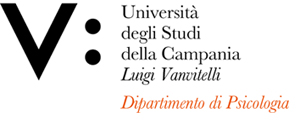Carmela GUERRIERA
Insegnamento di PSICOLOGIA DINAMICA
Corso di laurea in SCIENZE E TECNICHE PSICOLOGICHE
SSD: M-PSI/07
CFU: 8,00
ORE PER UNITÀ DIDATTICA: 56,00
Periodo di Erogazione: Primo Semestre
Italiano
| Lingua di insegnamento | ITALIANO |
| Contenuti | Studio dei diversi modelli di sviluppo in psicologia dinamica e della teoria psicoanalitica, come parte della disciplina, attraverso i principali autori, classici e contemporanei. Approfondimenti dei costrutti fondamentali della psicodinamica delle relazioni, nell’infanzia e nell’adolescenza. |
| Testi di riferimento | A) PARTE GENERALE: |
| Obiettivi formativi | Conoscenza dei principali orientamenti teorici psicodinamici- psicoanalitici. |
| Prerequisiti | NESSUNO |
| Metodologie didattiche | Lezioni frontali da 56 ore totali. Le lezioni si svolgeranno in presenza salvo disposizioni dell’Ateneo in merito a emergenze sanitarie dovute a epidemia da COVID-19 e sue varianti. In quest’ultimo caso le lezioni si svolgeranno in modalità online su piattaforma Ms Teams. In ogni caso, per la durata del semestre, le lezioni si svolgeranno 2 giorni a settimana con una durata di 3 ore ciascuna . |
| Metodi di valutazione | ESAME ORALE. SONO CONSIDERATI REQUISITI MINIMI I SEGUENTI:a) CONOSCENZA DEI CONCETTI DI BASE DELLE PRINCIPALI TEORIE PSICODINAMICHE ESPOSTE NEI TESTI DI ESAME E TRATTATI A LEZIONE DALLA DOCENTE; b) CHIAREZZA ESPOSITIVA E CORRETTEZZA DELLA TERMINOLOGIA SPECIFICA DELLA DISCIPLINA; c) CAPACITà DI ORGANIZZAZIONE DEL DISCORSO INTORNO A UN FOCUS PRESCELTO DALLO STUDENTE TRA GLI ARGOMENTI TRATTATI NEL CORSO E NEI TESTI D'ESAME; d) CAPACITà DI SINTESI. La docente invita lo studente, durante la prova d'esame, a valutare la possibilità di ritirarsi e di ripetere la prova nell'appello successivo se si prevede che possa non raggiungere la sufficienza o ottenere il voto minimo alla prova in corso. |
| Altre informazioni | Il programma didattico dell'anno 2021-2022 potrà essere adottato, ai fini dell'esame, anche da gli studenti iscritti ad anni successivi al secondo. Un programma didattico dura comunque solo due anni accademici. Mentre, gli studenti iscritti al secondo anno nel 2021-2022 NON potranno adottare, ai fini dell'esame, programmi didattici degli anni precedenti. |
| Programma del corso | PSICOLOGIA DINAMICA |
English
| Teaching language | Italian |
| Contents | Study of the different models of development in dynamic psychology and psychoanalytic theory, as part of the discipline, through the main authors, classical and contemporary. Insights into the fundamental constructs of the psychodynamics of relationships, in childhood and adolescence. |
| Textbook and course materials | A) GENERAL PART: |
| Course objectives | Knowledge of the main theoretical psychodynamic-psychoanalytic orientations. |
| Prerequisites | No prerequisite is needed. |
| Teaching methods | Frontal lessons of 56 hours total. The lessons will take place in presence except for provisions of the University regarding health emergencies due to the COVID-19 epidemic and its variants. In the latter case, the lessons will take place online on the Ms Teams platform. In any case, for the duration of the semester, the lessons will take place 2 days a week with a duration of 3 hours each. |
| Evaluation methods | ORAL EXAMINATION. IN THE ORAL TEST THE FOLLOWING MINIMUM REQUIREMENTS ARE CONSIDERED: a) KNOWLEDGE OF THE BASIC CONCEPTS OF THE MAIN PSYCODYNAMIC THEORIES EXAMINED IN THE LESSON FROM THE TEACHER; b) EXPOSURE CLARITY AND CORRECTNESS OF THE SPECIFIC TERMINOLOGY OF THE DISCIPLINE; c) SPEECH ORGANIZATION CAPACITY AROUND A FOCUS CHOSEN BY THE STUDENT BETWEEN THE TOPICS COVERED IN THE COURSE AND THE EXAM; d) SUMMARY CAPACITY. The teacher invites the student, during the examination, to evaluate the possibility of withdrawing and repeating the test in the next round if it is expected that he will not reach the sufficiency or obtain the minimum mark for the current test. |
| Other information | The educational program for the year 2021-2022 can be adopted, for exam purposes, also by students enrolled in the third year or out of course. While, the students enrolled in the second year will not be able to adopt, for the purpose of the exam, educational programs of the years prior to 2021-2022. |
| Course Syllabus | DYNAMIC PSYCHOLOGY |








